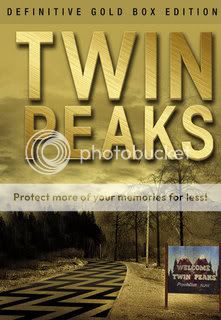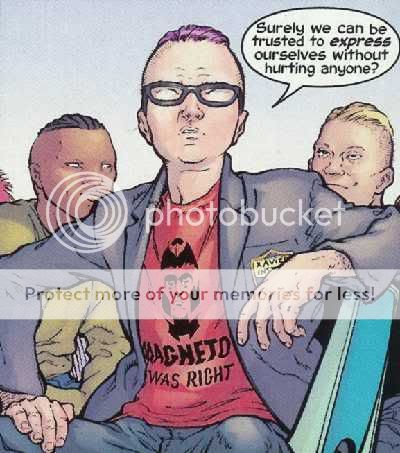Kill Bill: The Whole Bloody Affair. November 6th. Rated NC-17. (Via Cinematical.)
Quote of the day
According to health and law enforcement officials, there are several warning signs of the onset of Wayne Ray Thomas, including intense anxiety, shortness of breath, sweating, and a sudden loss of power to the victim’s house.
Physical symptoms of a full-scale attack include involuntary constriction of the airway and sharp, stabbing pains in the left arm, right arm, throat, and back. In the advanced stages, afflicted persons suffer external bleeding, loss of motor function, organ failure, and intracranial hemorrhaging.
So far, those stricken by Wayne Ray Thomas have exhibited a 100 percent mortality rate.
—“Florida Man Beats Out Heart Disease as Nation’s No. 1 Killer,” The Onion
Daybreak
Panels like this are why I read Brian Ralph’s first-person zombie-apocalypse indie comic Daybreak, and why you should too. Buy it here.
Music video nasties
A somewhat, shall we say, ambivalent relationship with food in general and meat in particular is expressed in this rather wonderful clip for “Sick Sick Sick” by Queens of the Stone Age, one of the best songs the band has yet produced.
Conspicuous consumption indeed.
Another one from the bookmark vault
Simply reading or hearing the words “transcend the genre” is enough to make me turn away in disgust, so goddess bless Jon Hastings: He’s devised a wonderful five-part taxonomy of “transcending the genre”, in an attempt to figure out the what critics who use this phrase to describe horror or other déclassé genres actually mean. It’s tempting to believe that TTG automatically equates to “I don’t like horror movies but I like this horror movie so therefore it is not a horror movie” (Jon’s TTG classification #1)–all the more so because that usually is what it equates to–but Jon elucidates some definitions that are actually useful and non-condescending. For example, a genre film that appeals to a wider audience than genre die-hards can be said, accurately and without pejorative connotations, to transcend the genre. Again, I don’t tend to find that that’s what mainstream critics who break out TTG are getting at, but still, Jon’s post was a tremendous eye-opener for me.
I also want to use this opportunity to point out Dave Intermittent’s shots across the bow of the “‘safe’ critical consensus” about the lo-fi, politically aware horror films of the ’70s. Dave asserts that budgetary concerns are not an inherent strength (or flaw) and that the impact of those movies upon their release was not predominantly (if at all) political in nature. Given recent developments in this area, they’re points worth considering.
It is happening again.

A complete, definitive Twin Peaks DVD set called “The Gold Box Edition”–including Season One, Season Two, and the pilot–is supposedly headed for shelves this October 30th. Rumor-riffic details can be found at TVShowsOnDVD.com (still no word on extras).
So excited.
Well, it ain’t Hostel: Part II, obvs
This week’s Horror Roundtable question: Name your favorite horror sequel. It’s a toss-up!
And that’s one to grow on
A propos of nothing, I want to point out this post by James Smith responding to my post on the artificiality of Alan Moore’s writing; I’ve had the thing bookmarked for ages. James takes things in a number of directions, from pointing out that comparing Watchmen to a group-written enterprise like The Sopranos is an apples/oranges deal to suggesting that Moore’s imposition of patterns on patternless life is what people do all the livelong day.
From “All Along the Watchtower” to “Don’t Stop Believin'”?
It’s nerd-guru blogging weekend, apparently: On his blog, Battlestar Galactica re-inventor Ron Moore waxes rhapsodic about the Sopranos finale, calling it “perfect” and saying “I wish I’d thought of it first.” Not that I was worried before, but this gives me a lot of faith in BSG‘s final season, that’s for sure. (Via Jim Treacher)
You won’t have Eli Roth to kick around anymore
On his blog, the director of Hostel: Part II says this weekend will the last chance you have to see a new movie of his for the forseeable future; after that, his financially (and creatively -ed.) disappointing Hostel sequel will probably be out of theaters, and it will be a long time before Cell, Trailer Trash, or anything else he’s been talking about will see the light of day. He blames much of the failure of the film on leaked bootlegs of a rough cut that surfaced before the release date, both for siphoning away the audience and leading to reviews of that rough cut by sundry online critics. (The possibility of inherent faults within the film itself is not acknowledged; “People love the movie,” he says.) He also warns that with the failure of this movie, the future of R-rated horror as a viable genre with studios and theater chains is in doubt. Frankly, after actually seeing Hostel: Part II, it’s tough to get all that worked up over that prospect. (Via Bloody Disgusting.)
Friday T-shirt blogging
I grabbed this spiffy Grant Morrison/Frank Quitely New X-Men-derived number from Mutant-America.com, purveyors of a variety of great comics-logo shirts that aren’t available through more, er, official channels. (The licensed “Magneto was right” T-shirt has a gigantic grimacing Jim Lee Magnus set on a black background with a goofy badass font. No thanx.)
All Day I Dream About Cenobites
According to a recent AOL interview with Korn lead singer Jonathan Davis, he’s working on an opera entitled Oblivion with none other than Clive Barker. I’ve been wondering what was up with this project: Barker mentioned a potential collaboration with Davis to me waaay back in the spring of 2001, but that was pretty much the last I heard of it; I don’t recall it being mentioned in any of the upcoming-project laundry lists that official Barker site Revelations puts together on a regular basis. I’ll admit that this project is a lot less interesting to me now than it was six years ago considering Korn’s output since then, but take it from this metal fan: Korn’s first few records contain enough interesting ideas to make a Davis/Barker collab worth looking into. (Via Bloody Disgusting.)
Your vice is a locked room and now nobody has the key
Killing in Style, Sylvian L.’s marvelously sharp and stylish (ha, fittingly enough) giallo blog, is coming to an end. In fact, to hear Sylvian tell it, he’ll actually be deleting the whole thing, not just quit posting. Go and explore while you still can.
Baby got Quarterback
I’m talking about this week’s installments of World War Hulk, New Avengers, Justice, The Amory Wars, B.P.R.D.: Garden of Souls, Mystic Arcana, and The Trials of Shazam! at Wizard’s Thursday Morning Quarterback.
How’re you gonna keep them down on the farm after they’ve seen Wolfman’s nards?
Bloody Disgusting has posted the trailer for the 2-disc 20th Anniversary Edition Monster Squad DVD. Clearly aimed at the Harry Potter set, yet still indescribably awesome. Get ready to have your proverbial Twinkie stolen.
Hobbit-forming
The former film studies student in me still can’t quite believe I’m saying this, but Kristin Thompson is reading the tea leaves regarding the likelihood of a Peter Jackson-directed adaptation of J.R.R. Tolkien’s The Hobbit, detecting a possible softening of the hardline anti-Jackson stance taken by New Line honcho Bob Shaye. Fingers crossed, man.
The state of the beast
A 50-ton bowhead whale caught off the Alaskan coast last month had a weapon fragment embedded in its neck that showed it survived a similar hunt — more than a century ago.
Embedded deep under its blubber was a 3½-inch arrow-shaped projectile that has given researchers insight into the whale’s age, estimated between 115 and 130 years old.
[…]
The 49-foot male whale died when it was shot with a similar projectile last month, and the older device was found buried beneath its blubber as hunters carved it with a chain saw for harvesting.
—“Weapon dates bowhead whale to 1800s,” AP, CNN.com
Daniel Robert Epstein
The news of the passing of venerable Suicide Girls interviewer-of-all-trades Daniel Robert Epstein at the young age of 31 is just stunning to me. I didn’t know him at all, but he was a force of nature who racked up the best roster of interview subjects of pretty much any writer ever, and did a fine job with them to boot. It’s strange how much the death of someone with whom you have no real connection can affect you in this Internet age, but my thoughts go out to his family and friends. I will definitely miss his work, and the role it played.
Quote of the day
These are bad people. Evil people, really….We sympathize, however, not because they aren’t bad people, but because we aren’t bad people and bad as the bad people may be, they’re still people and we, as good people, recognize a common thread of shared humanity between us. The fact that Tony Soprano isn’t a cartoonish villain doesn’t mean he’s not a villain.
I’ve decided
I’ve decided not to bother with the “that sucked!” school of Sopranos final-episode criticism at all. I disagree so much–on the level of “well, you clearly were watching the show for reasons that were, if not objectively wrong, then at least 180 degrees apart from my own”–that there’d be no common ground to be found, and it would simply drive me crazy and lessen the enjoyment I got out of the series. And fuck that. I’m not looking for reasons not to enjoy the things I enjoy, nor do I read and participate in criticism to wage campaigns of attrition.



